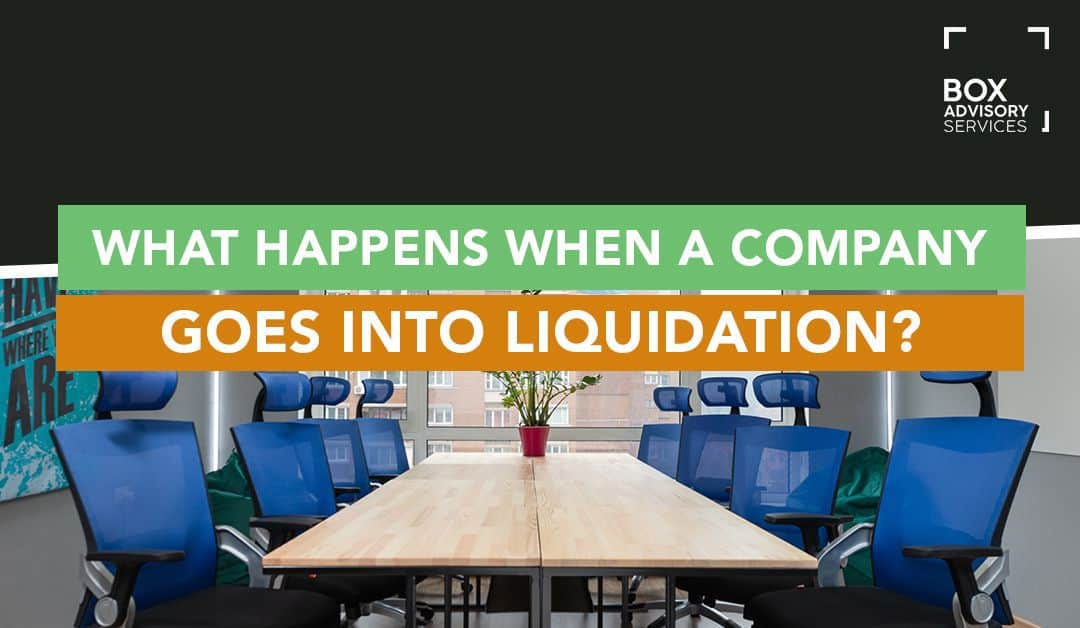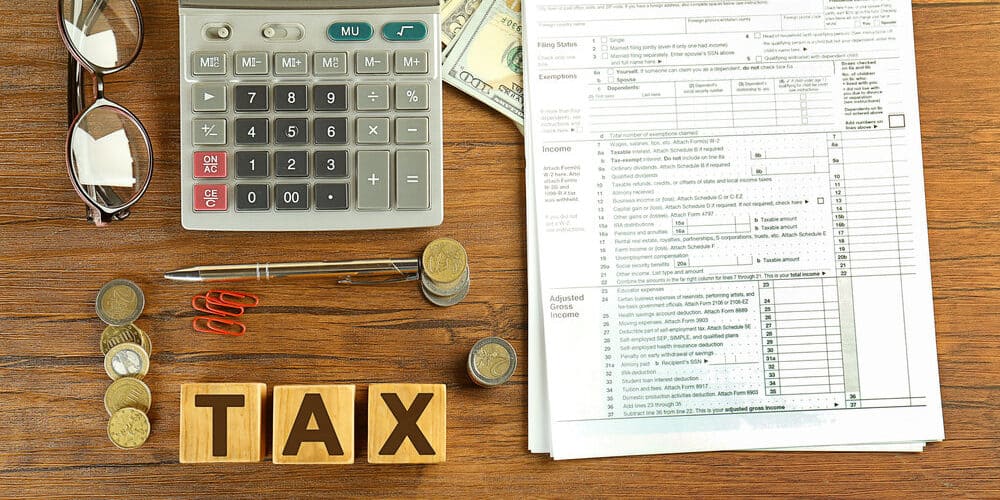
BY
|
What Happens When a Company Goes Into Liquidation?
Considering the current state of the worldwide economy and the effects of the pandemic, it’s no surprise that business owners are rethinking their exit strategies, particularly in terms of liquidation.
Some business owners have seriously weighed up the option of closing their doors to avoid possible negative consequences. But for others, the negative impact of a struggling economy has been unavoidable.
If your company is drowning in debt, insolvency is likely looming, and liquidation is the only way out. But what does business liquidation mean? What happens to the company’s debts and assets when it goes under?
This article will answer these questions, providing a comprehensive understanding of the liquidation process.
What is Liquidation of an Insolvent Company?
When a company’s liabilities exceed its assets and has debts it can’t afford, they are declared insolvent. In other words, it’s no longer a solvent company and they can’t afford to repay creditors. And unfortunately, according to Australia’s insolvency laws, insolvent companies are not allowed to trade.
In fact, a director has a positive duty to ensure that the company doesn’t continue trading and incurring debt while insolvent.
You can’t continue trading and apply with the Australian Securities and Investments Commission (ASIC) for voluntary deregistration, so the only way to pay off your creditors and close your company is through insolvent liquidation.

How Do You Liquidate a Company?
Liquidation can occur after voluntary administration or by court liquidation order, but this can be carried out in several ways.
Creditors Voluntary Liquidation
When a company’s directors believe that insolvency is imminent, creditors voluntary liquidation can happen by appointing an administrator. This person will investigate the company’s affairs, find solutions to its financial problems, and make recommendations to the creditors.
The process, known as voluntary administration, occurs before the actual liquidation.
The creditors of insolvent companies can decide to enter into a deed of arrangement with the company. The process involves restructuring the company to see if it can continue trading.
Alternatively, if most shareholders agree, they can opt for a member’s voluntary liquidation, a process where the company members decide to wind it up voluntarily.
Involuntary Liquidation
If an insolvent company doesn’t take action to resolve its financial issues, a creditor or shareholder can institute legal proceedings to liquidate the company. If the court is satisfied with enough grounds to liquidate the company, it will issue a court order and appoint a liquidator to begin the liquidation process.
The Liquidation Process
The insolvent liquidation process involves appointing an independent, external administrator or liquidator to wind up the company’s affairs and ensure that the creditors are fairly compensated.
The process involves the following steps.
1. Assessing the Company’s Financial Affairs
Before any action is taken, the liquidator thoroughly reviews the company’s financial records, including examining balance sheets, BAS statements, income statements, and cash flow statements to understand the company’s financial health and the extent of its debts.
2. Assessing Claims Against the Company Directors
The second step involves evaluating any potential misconduct or mismanagement by the company directors. The liquidator will check if the directors have fulfilled their fiduciary duties and if there are any grounds for legal action against them.
3. Establishing Claims Against Debtor Companies
If some companies or individuals owe money to the company undergoing liquidation, the liquidator will identify them and establish claims. Doing this ensures that all outstanding debts owed to the company are collected and used to pay off its creditors.
4. Reporting to Creditors
Communication is key during the liquidation process. The liquidator will regularly update the company’s creditors about the progress of the liquidation, potential recoveries, and any other relevant information. This keeps the creditors informed and sets expectations about potential repayments.
5. Realising the Company’s Assets to Pay Outstanding Debt
One of the primary roles of the liquidator is to sell or “realise” the company’s assets, including tangible assets like property and equipment and intangible assets like intellectual property. The proceeds from these sales are then used to repay the company’s debts.
6. Paying the Creditors in Order of Priority
Once the assets are realised, the liquidator will distribute the proceeds to the creditors. The process is done in a specific order of priority, usually starting with secured creditors, followed by unsecured creditors, and finally, if any funds remain, the shareholders.
7. Applying for Deregistration of the Company Upon Completion of the Liquidation
After all assets have been realised, debts paid off to the extent possible, and all other duties completed, the liquidator will apply to deregister the company. Taking this action formally ends the company’s existence in the eyes of the law.
What Are The Consequences of Going into Liquidation?
Once the liquidation process is complete, the company will no longer exist as a trading entity. However, while the liquidation process is underway, the company can continue trading, provided that they have permission from the liquidator to do so.
What Does Liquidation Mean for Unsecured Creditors and Shareholders?
Regardless of whether a company enters liquidation voluntarily or involuntarily, an unsecured creditor can’t institute legal proceedings to recover their debt once the process has begun.
The purpose of liquidation is to realise what’s left of the company’s assets and settle its outstanding debt as fairly as possible. In an ideal situation, the unsecured creditors would have all their debts paid out, but that is not always true.

While the liquidator has to maximise the company’s assets to distribute among its creditors, it’s impossible to satisfy all the debts. This is because the liquidator must make payments according to the following priority list:
- Liquidation costs
- Unpaid wages and superannuation
- Outstanding employee entitlements, such as retrenchment payments
- Unsecured creditors
- Shareholders
If, after the liquidation costs are settled and the company employees are fairly compensated, there are insufficient funds to settle the debt fully, creditors will receive payment according to the proportion of their debt.
As shareholders are last on the priority list, it is unlikely that they will receive the full dividend payout during liquidation.
What About Secured Creditors?
A secured creditor holds a vested interest in some of the company’s assets. For example, they might hold a security interest in the company’s assets due to a mortgage loan.
If their security interest has been properly registered according to the Personal Property Securities Act, secured creditors essentially fall outside the liquidation process because they have a legal guarantee to get their money back from the liquidated companies.
What About Those Who Miss Out On Their Claim?
While the liquidator will do their best to ensure that all parties are fairly compensated, there aren’t always sufficient funds to meet all the claims.
If employees don’t receive a settlement of their entitlements, they can seek assistance from the Fair Entitlements Guarantee, which is a scheme that allows employees who have been retrenched due to liquidation to claim up to 13 weeks of their various entitlements, including unpaid wages.
Unfortunately, as mentioned previously, a consequence of liquidation for unsecured creditors is that they aren’t allowed to pursue legal recourse to recover their debts because they no longer have an interest in company assets.
So, there is no recourse for creditors who miss out; it’s simply part of the lending risk.
Shareholders also don’t have much recourse if they miss out on a claim because they are last to be paid. So, their only recourse is to realise their loss as a capital loss.
What Does Liquidation Mean for Company Directors?
Once a liquidator has been appointed voluntarily or involuntarily, company directors will no longer have any decision-making authority. The liquidator now manages all the company’s affairs.

And while the director(s) are generally protected during the liquidation process, there are some instances where they may be held personally liable, including the following:
- Where they were in breach of their director duties
- Where operated unlawfully by trading insolvent or by breaching the requirements of the Corporations Act
- They made a personal guarantee to creditors (in other words, they agreed to be personally liable for creditor debts if the company could not pay them).
Liquidators are permitted to institute proceedings against the directors in the first two instances (breach of duties and insolvent trading), and creditors can institute proceedings against the debtor in their personal capacity (i.e., not against the company) to claim their outstanding debt.
While being banned as a director is risky, it’s not a likely or automatic process. In fact, directors generally won’t get disqualified unless ASIC believes it’s in the public’s interest to impose a ban.
Generally, ASIC may disqualify a person from managing a corporation for up to five years if they have been an officer of two or more companies that have entered liquidation within the previous seven years, although this also depends on the circumstances and relationship between the companies. It may also depend on whether they committed one of the abovementioned offences.
It’s worth noting that credit reporting agencies keep track of companies that enter liquidation and the names of the directors of those companies. But it’ll only impact you in circumstances where the information is relevant.
For example, if you are applying for a personal loan, it’s unlikely to be noticed. But if you’re applying for a business loan, it’s likely to be a point of interest for the potential lender.
What are the Pros and Cons of Liquidation?
As with any exit strategy, it’s important to weigh up the pros and cons of voluntarily entering liquidation.
Some advantages include:
- Outstanding debts are written off
- Creditors can’t pursue legal action
- Relatively inexpensive
- Lease terms are automatically cancelled
Some disadvantages include:
- All business assets will be sold
- Staff will become redundant
- Directors may face personal liability for debts (personal guarantees)
Key Takeaways
No business owner opens a company with an exit strategy that involves liquidation. It’s not an ideal situation to be in, but given how tough the last few years have been, it may be an inevitable situation for many companies.
However, if you haven’t quite reached the stage where it’s necessary to appoint a liquidator, you’ll want to consider engaging the services of expert chartered accountants and business advisors who can help you navigate your problems and possibly avoid the liquidation process.
At Box Advisory Services, our team of qualified accountants and business advisors will work closely with you to provide the insight and guidance needed to ensure that all aspects of your business are running smoothly and efficiently.
So, if you need guidance on managing your company’s financial health so that it continues to succeed for years to come, contact us today.
FAQs
What is Liquidation in Business?
Liquidation in business refers to the process of ceasing operations and selling off assets to pay off debts. It’s the last resort when a company cannot meet its financial obligations.
What Does Liquidation Mean in Business?
Liquidation means the winding up a company’s operations, selling its assets, and using the proceeds to pay off creditors. Once the process is complete, the company no longer exists and is removed from the register of companies.
What is Liquidation?
Liquidation is the formal process of ending a company’s existence by selling its assets and using the proceeds to settle debts with creditors. It’s typically initiated when a company is insolvent and cannot pay its debts.
What is Liquidation of a Company?
Liquidation of a company is the official process where a company’s operations are concluded, its assets are sold off, and the proceeds are used to pay off its debts. After liquidation, the company is formally dissolved.
What Do Liquidators Do?
Liquidators are professionals appointed to oversee the liquidation process, often accountants or insolvency specialists. Their responsibilities include selling the company’s assets, paying off creditors, investigating its financial affairs, and ensuring all legal requirements are met during the liquidation process.
What Does it Mean to Liquidate a Company?
Liquidating a company means winding up its operations, selling off its assets, and using the proceeds to pay its debts. It’s a formal process that results in the company ceasing to exist.
What Happens to Employees When a Company Goes into Liquidation?
When a company enters liquidation, its operations usually cease, meaning employees are often made redundant.
In many jurisdictions, there are provisions to ensure that employees receive their unpaid wages, accrued leave, and other entitlements from a government fund or the proceeds of asset sales, although this can vary depending on the specific circumstances and local laws.



